This article references attribution concepts and insights sourced from The Ultimate Guide for Campaign Attribution.
It is imperative for GTM leaders to have some form of campaign attribution set up to understand which initiatives are driving results for the business. However, when it comes to choosing the right model for your organization there are several options and they can each affect your data in different ways.
According to the State of Marketing Measurement, Attribution & Data Management report, only 9% of US marketing professionals rate their company’s understanding of attribution as “Excellent”. Which means that the other 91% still have questions about campaign attribution, or have minimal understanding.
Determining the right campaign attribution model for the business comes with understanding the current initiatives that are in place, along with getting clarity on what the different models mean.
The Right Attribution Model for Your Business
Attribution means giving credit to the campaigns that have affected the buyer’s journey from their first interaction with your marketing assets to the time that an opportunity is created. How these campaigns are awarded credit depends on the attribution model that your organization decides. Watch our Webinar on Demystifying Multi-Touch Attribution to learn more or read below!
What Campaigns Are Being Done?
What is your organization currently doing to engage their audience? Is business generated solely via outbound sales activities such as emails and phone calls? If that is the case, then you will not need a multi-touch attribution model. Are you running multiple marketing campaigns, using paid media, webinars, and downloadable content? Then yes, it is time to discuss using a model that will give credit to more than one touchpoint.
A multi-touch attribution model gives credit to each touchpoint throughout the buyer’s journey. As each touch is highlighted and historical data is accumulated, teams can start to pinpoint the campaign journeys that are most likely to lead to closed won deals, allowing them to prioritize efforts and allocate budget to the initiatives that will yield the best results.
If an organization is only using one initiative such as an outbound sales campaign, then a simplified model that only gives credit to one touchpoint will suffice.
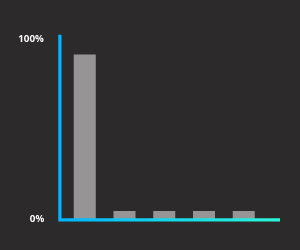
Fig. 1 First Touch Attribution Model
Starting with a First Touch
Attribution Model
Do you have insight into which campaigns are driving revenue for the business? Do you currently have any attribution reporting in place? If not, then the place to start is the first touch model.
At the bare minimum, leadership needs to understand where leads are coming from, so that they can acquire more. There needs to be some tracking in place, so that the VP of Marketing can understand which demand gen campaigns are working the best and which deserve more allocation.
A first touch model (fig. 1) gives all of the credit from an opportunity that a buyer is associated with to the very first interaction they have with your marketing campaigns. It highlights just one touch in their journey.
For an organization that has multiple campaigns running, this model is the minimum of what should be done to at least acquire some insight on what is working and what is not.
If an organization does not have internal resources to set up proper multi-touch tracking, then a third-party expert resource is recommended. It will cost organizations far more to continue pouring funds into campaigns that are not driving revenue than to partner with a professional who can expedite the process and ensure it is done correctly.
Multi-touch Attribution Models
Teams working to achieve multi-touch attribution, need to decide which model they want to use. A Gartner research study revealed that over half of marketing leaders do not fully trust their current data modeling techniques. Each model affects the data differently and will highlight certain department efforts over others, so it is essential to understand how each one functions.
Which inflection points in the buyer’s journey matter the most to your leaders? Is it how the prospect found your business? Is it the sales email that went out just before an opportunity was created? Is it the point just before a prospect becomes a Marketing Qualified Lead?
Having this conversation will help to answer the question of which model will best align with the organization.
The First Touch & The Last Touch
If the first touch and the last touch are the points that your team cares about the most, then this would align best with a U-Shaped Model. The other campaigns involved will still receive credit, but not as much as the first and the last touch (fig. 2). This would favor both the Demand Gen team and the Sales team because typically marketing is the first interaction with a prospect and then a sales email, or sales outreach campaign is the last interaction that happens just before an opportunity is created.
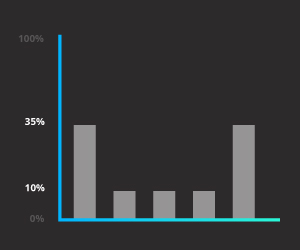
Fig. 2 U-Shaped Attribution Model
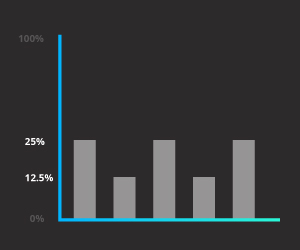
Fig. 3 W-Shaped Attribution Model
The First, Last, and Middle Touch
In addition to the first and the last touch, a W-Shaped model gives more credit to a middle touchpoint determined by the team. This middle touchpoint could be the campaign that a prospect interacts with right before they become a Marketing Qualified Lead (fig.3).
This is the model that Founder & CEO of SaaScend, Craig Jordan, stressed during our attribution fireside chat. He went into detail about how understanding the campaign that is triggering the shift from prospect to MQL can help provide clarity into the initiatives that help to advance prospects to the next stage in the funnel.
Emphasis on The Last Touch
If the last touch (fig. 4) is most important, then this best aligns with a Last Touch or Time Decay Model. A Last Touch model is not multi-touch, if all of the credit for the buyer’s opportunity is given to just the last touch. This ignores the other campaigns that the buyer interacted with and heavily favors the sales team’s efforts, but does not give too much insight into what marketing should be doing to drive more revenue.
A Time Decay Model (fig. 5) still favors the last touch as the most credit is awarded to this inflection point, but it still awards influence to the other campaigns, just less and less as campaigns are tracked back to the buyer’s first touch point.
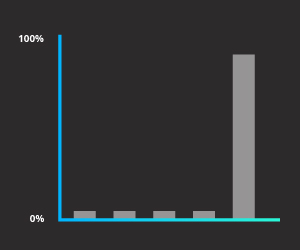
Fig. 4 Last Touch Attribution Model
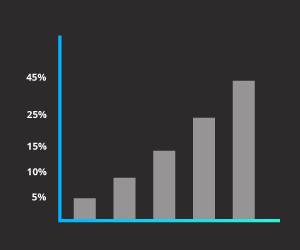
Fig. 5 Time Decay Attribution Model
Custom Attribution Model
Teams gravitate towards a custom model (fig. 6) when they want to award specific amounts of credit to different points in the buyer’s journey. For example, maybe they place more weight on the campaigns that happen towards the beginning part of the buyer’s journey. Perhaps there is more weight placed towards the end.
This model is more advanced and is recommended for consideration only after there is a thorough understanding of how the different models will affect the data and emphasize certain efforts over others.
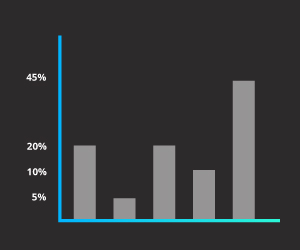
fig. 6. Custom Attribution Model
Even Distribution Model
If teams are not quite sure which inflection points to emphasize more, then an even model is a good place to start for multi-touch attribution. It awards equal credit to all campaigns that a buyer interacts with throughout their entire journey. It still empowers marketing and sales operations to understand the ideal customer journey that leads to faster funnel velocity.
Why Attribution is Essential
If there is no attribution reporting in place at all, then your team is flying blind. They are spending their valuable time and effort on campaigns, but have no idea which ones are working. They have no view into which campaigns they should review for discontinuation, so they can prioritize their time on other initiatives that will drive better results for the business.
Review current campaign efforts, decide if there are multiple touchpoints to be tracked, if there are, then assess the current campaign tracking that is already in place. If there is none, then either start with a first touch model to at least have some insight or take the time to start building out a multi-touch model. Discuss the points that matter most to the team throughout the funnel. Once that decision has been made, it is time to implement that model.
For a more detailed explanation of the attribution models and the foundational systems that need to be in place to achieve attribution, Download The Ultimate Guide to Campaign Attribution.

